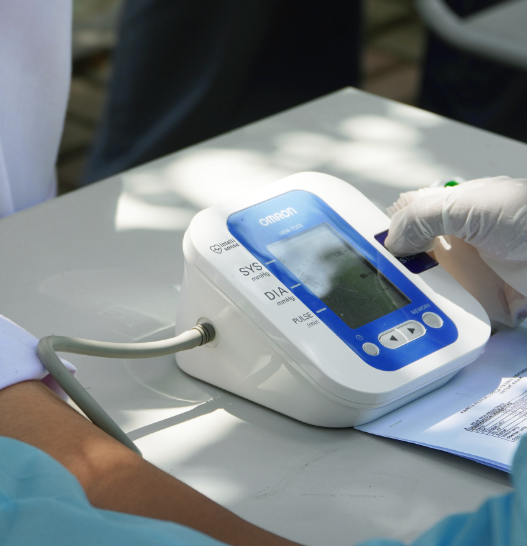Poor usability of a medical device can lead to injuries and endanger the well-being of patients or users. For you as a manufacturer, there is also the risk, that your product will not be approved or that you will be held liable for defects in the product. But what exactly do we mean by usability and what are the specifications you have to adhere to during product development? And why is usability so important for a product? How do you achieve good usability for your product? If these questions are of interest to you, then our basic terms article is the right place for you.
We explain to you quickly and precisely what is meant by the word “usability” and provide you with positive and negative examples from real life.
What is meant by the term “usability”?
The DIN standard DIN EN ISO 9241-11 defines usability as the usefulness of a (software) product. It is defined as the “extent to which a system, product or service can be used by specific users in a specific context of use to achieve specific goals effectively, efficiently and satisfactorily.”
The IEC 62366 definition is as follows: Usability is the “property of the user-product interface that includes effectiveness, efficiency, ease of learning, and satisfaction of the user.”
In the medical field, particular focus is placed on the safe and error-free operation of a product. It is important to determine for which use a medical product is intended and who is a potential user. The context of use can also play a major role in terms of usability. A quiet warning tone in a loud and hectic environment would be considered poor usability.
Why is usability so important?
On the one hand, you must prove that your medical device is fit for purpose. If you cannot do this, it will not be approved. On the other hand, good usability can give your product a clear market advantage. The user experience, and thus the user experience of your customers, also benefits greatly here.
But why do you have to pay this much attention to usability in the medical sector? In an emergency, incorrect operation can lead to injuries to the patient, the user or third parties. Therefore, it is very important to eliminate all operating errors resulting from poor usability as far as possible. Since this is required by law, it is your duty to prove that you have dealt with this topic in a targeted manner. In order to have a certified medical device at all, you must make an effort to ensure that its usability is flawless.
How can you achieve a good usability?
For good usability, you need to collect data from real users. This is the only way to ensure that you create a product that is both safe to use and adapted to user expectations.
So for good usability, user testing must be done. This means that users are given a prototype of the medical product to perform critical and frequent tasks under realistic conditions while being observed. This is done in the best possible way in an iterative process that gradually translates the identified user needs into clear design specifications.
A deeper understanding of the way, we do usability testing, is given on our website.
MDR, IEC 62366, FDA and the requirements for the usability of a product
Two regulations are particularly interesting for the design of usability: the IEC 62366 standard, which combines the legal requirements from Europe, the USA and Great Britain, and the Medical Device Regulation. The latter is the European Medical Device Regulation.
The aim is to guarantee a development process that is oriented toward the usability of the product. During this process, you must define the context of use of your product, specify the usability requirements, and then prove them in a validation process.
Specific usability engineering requirements for a medical device are also found in the MDR. Here, too, the specification, verification and validation of the usability of a medical device are to be defined
- Risks due to the ergonomics of the product must be minimized.
- The safety of the patient, the user and any third parties during use must be ensured.
- It must be possible to interpret the display and control screens quickly and without error in the respective context of use.
- It must be possible to exclude any danger to untrained third parties.
- Even if the medical device is already on the market, further usability monitoring must take place. For example, through user tests and studies.
- Any instructions and directions for use supplied with the product must also be clearly formulated and accurate.
The American FDA (Food and Drug Administration) provides a guideline document called „Applying Human Factors and Usability Engineering to Medical Devices“. Again, this is intended to ensure the safe and effective use of a medical device. The document provides clear recommendations for manufacturers regarding design and potential usability improvements. Clearance for the U.S. market is achieved using the 510K clearance process. The FDA also provides a ein Richtlinien-Dokument for this.
Usability in the medical sector: positive and negative examples
The following example shows how poor usability can cause damage:
The Nielsen & Norman Group reported on software that a hospital used to let its doctors determine the amount of medication their patients were taking. A study found that this software allowed a full 22 ways to assign incorrect medications to patients. The majority of these 22 errors were due to poor usability caused by unnecessarily complicated operation and a misleading flow of information (source).
In another example poor usability led to a Texan being discharged from the hospital with Ebola in 2014. This error could be traced back to the patient’s electronic medical record software. An important piece of information, namely a trip to West Africa previously made by the patient, was only played out to the nurses, but not to the doctors who were in charge of the diagnosis (source).
A positive example of good usability in the medical sector is a well-designed blood pressure monitor. With this device, a layperson can not only measure his or her own blood pressure independently and without risk of injury, but can also interpret it. Very good usability here would mean that the values on the display are shown in color and can therefore be interpreted without much prior knowledge. Green for healthy blood pressure, orange for moderately good values, and red for very high blood pressure. Good usability also includes the clear, illustrated operating instructions, which are printed directly on the device’s cuff and leave no doubt about how to attach and use the device.
Conclusion
Usability means more than just good usage of a product. When implemented in accordance with regulations, it ensures that a medical device is safe and as easy to use as possible. Above all, the regulations of the MDR, the FDA and the IEC 62366-1 must be included in the design process.
Where in your professional or private life have you been particularly struck by the usability of a medical device? Is there perhaps even a specific case in which you would like to see better usability? What challenges do you face in the development of your medical product? Feel free to comment on this post or get in touch via our contact form.



